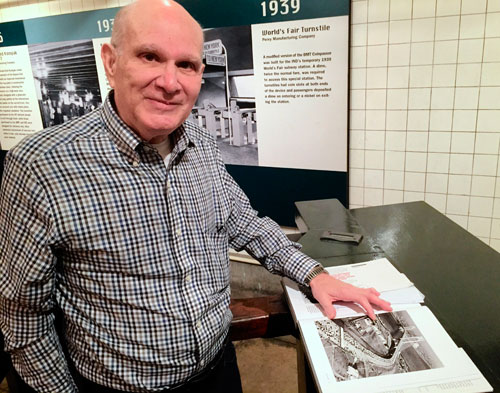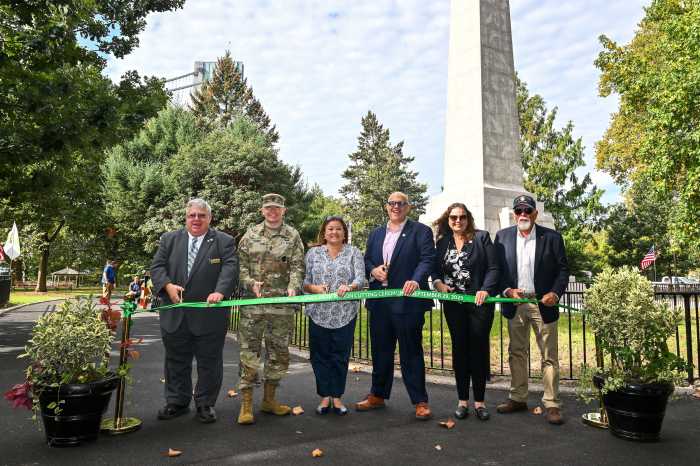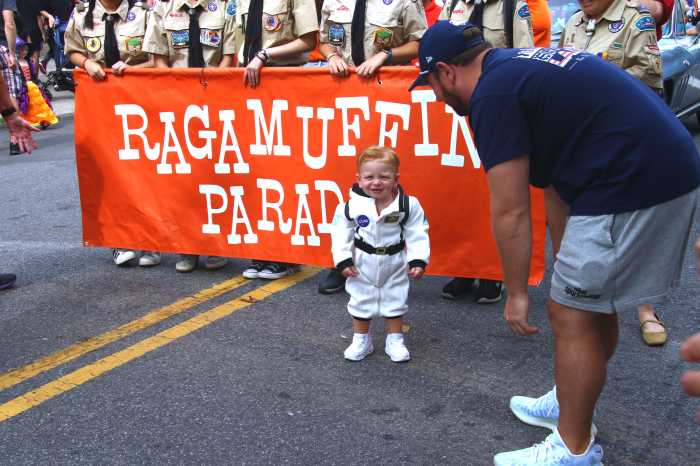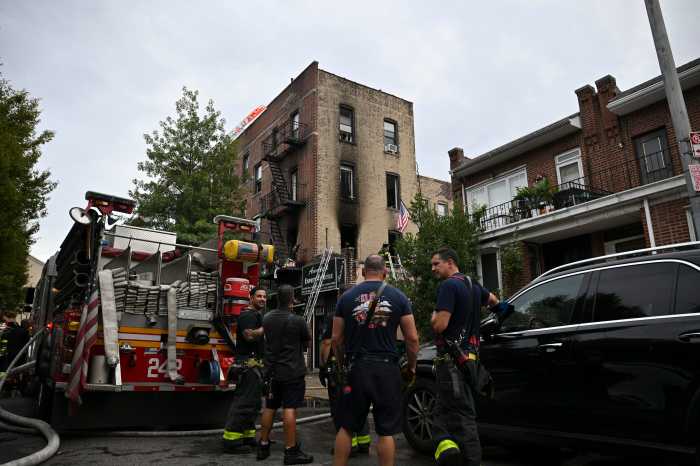The Verrazano-Narrows Bridge turned 50 on Nov. 21, and after half a century connecting Brooklyn and Staten Island, practically everybody has a story about the span.
The number of people old enough to grasp the project’s enormity during construction in the 1960s is fewer every year, but their stories are timeless tales of loss, renewal, and getting the job done.
For one Ridge family that lived in the shadow of the bridge, construction took the roof from over their head, but then also put food on the table.
“My mother’s family rented an apartment on 86th street and Seventh Avenue-ish and had to move because of the bridge — then her father helped build it,” said Ridge writer Henry Stewart.
The city razed 800 homes and businesses using eminent domain, clearing the way to build the ramps up to the bridge. Stewart’s mom Robin was just 2 years old when her family had to pack up and leave their apartment, she said. Her father was a dock-builder who helped pour concrete for the bridge’s tower foundations, she said. And, she added, the urban legend that a worker is trapped in the bridge’s cement has some roots in reality.
“At least one person fell in the concrete pour,” she said, adding that he was quickly rescued. “My dad was there, and as you would expect, was very upset by it.”
Water under the bridge
When news hit Bay Ridge that the construction would push scores of people out of their homes, the neighborhood was incensed. The Bay Ridge Community Council formed in part to galvanize opposition to the span, said Bob Kassenbrock, a board member whose father and uncle founded the organization in 1951.
But now local ire is focused on skyrocketing tolls rather than the move-along the city gave residents a half-century ago, said Kassenbrock, adding that the group eventually adopted the iconic bridge as its symbol.
“The Brooklyn tower is on the Community Council’s flag,” he said, laughing at the irony.
A bridge not too far
One of the first people to cross the Verrazano-Narrows Bridge was a Brooklynite, who drove from Flatbush to Staten Island in a borrowed car to be part of history.
“We came from the Brooklyn College area,” said Mark Schaier, who was 19 at the time and now lives on Long Island. “I borrowed my dad’s 1961 silver Plymouth Fury, and we drove to Staten Island. Took the ferry from 69th Street and then the Manhattan ferry, which dropped you off around Saint George.”
Schaier’s wasn’t the first car to cross the span, but he remembers the toll plaza’s first-day foibles.
“We got to the entrance in the plaza with a few cars ahead of us,” he said. “I dropped my change in the bucket and waited for the light to turn green, but it didn’t, so I said to ‘Hell with it,’ ” Schaier said, pantomiming stomping on a gas pedal.
He may not have been the first to cross, but Schaier contends he was the first to get off the new expressway in Bay Ridge. Before crossing, Schaier picked up a brother-and-sister duo looking for a lift over the bridge.
“We got off at 92nd street to drop them off,” he said. “We were the first to use that exit.”
Casting a long shadow
For many locals, the bridge has overshadowed their entire lives. Many can’t remember a time without the span, and most have seen it from every conceivable angle — except one, according to an ironworker who built the span.
“I’ve been to the Cliffs over Moher, the Grand Canyon, and Niagra Falls. Nothing compares to the view from that tower,” said Eddie Johnson, who worked hundreds of feet in the air spinning support cables between the bridge’s 693-foot towers from April to September 1963. “Nobody else has had that thrill.”
The cable-spinner lived in Manhattan while working on the span and now lives in Queens, but he said the bridge casts a long shadow.
“This bridge is in my blood,” he said. “When I see rust on that bridge, it’s rust on my arm.”

























